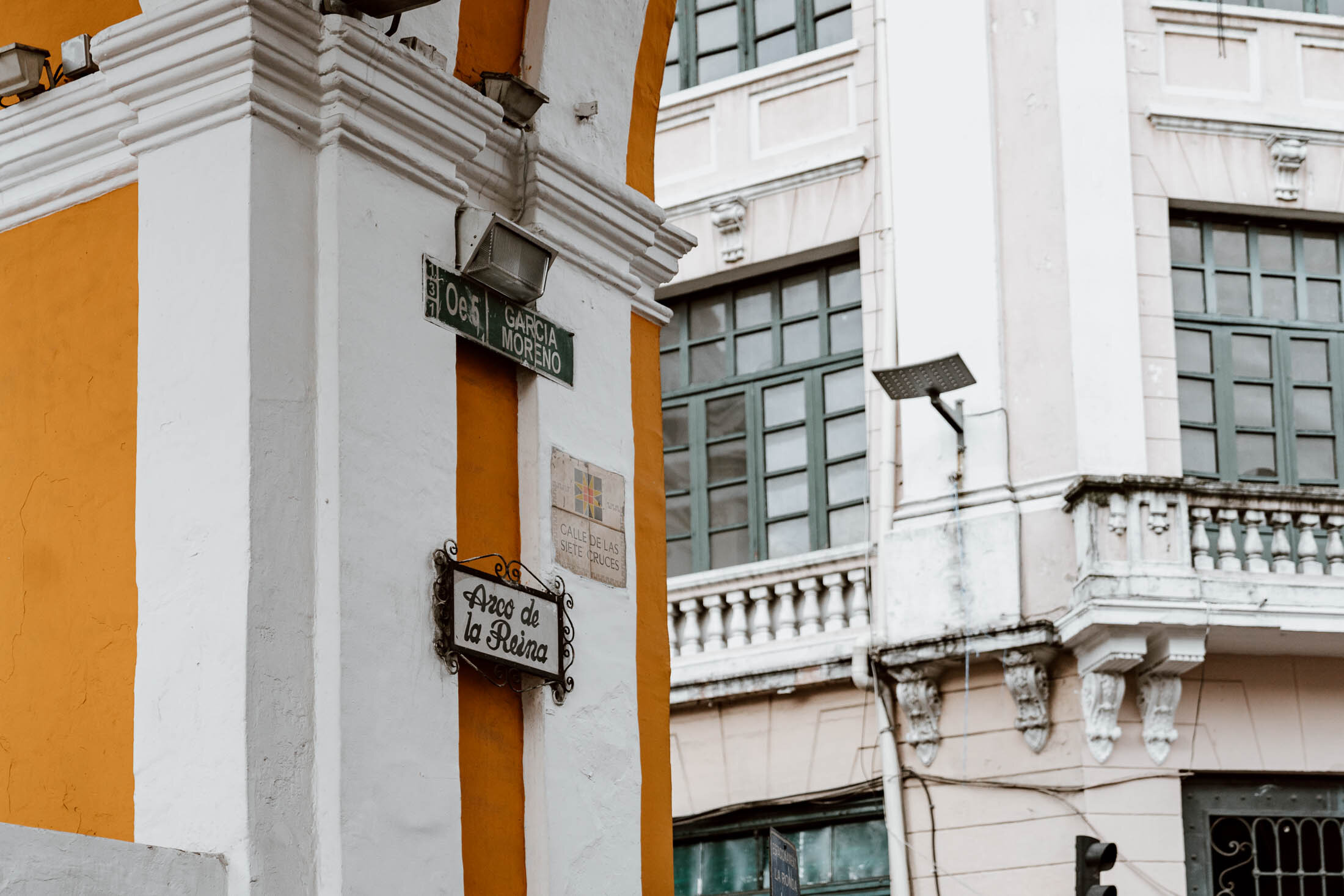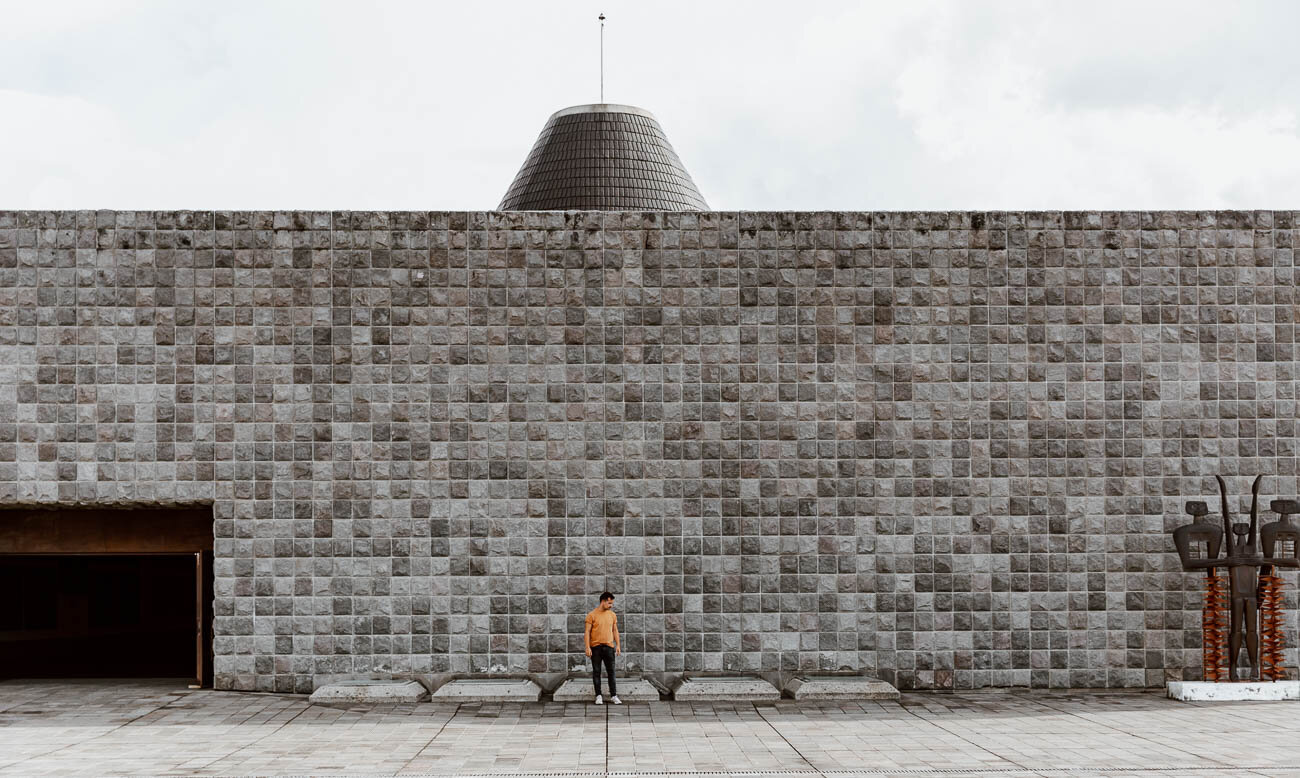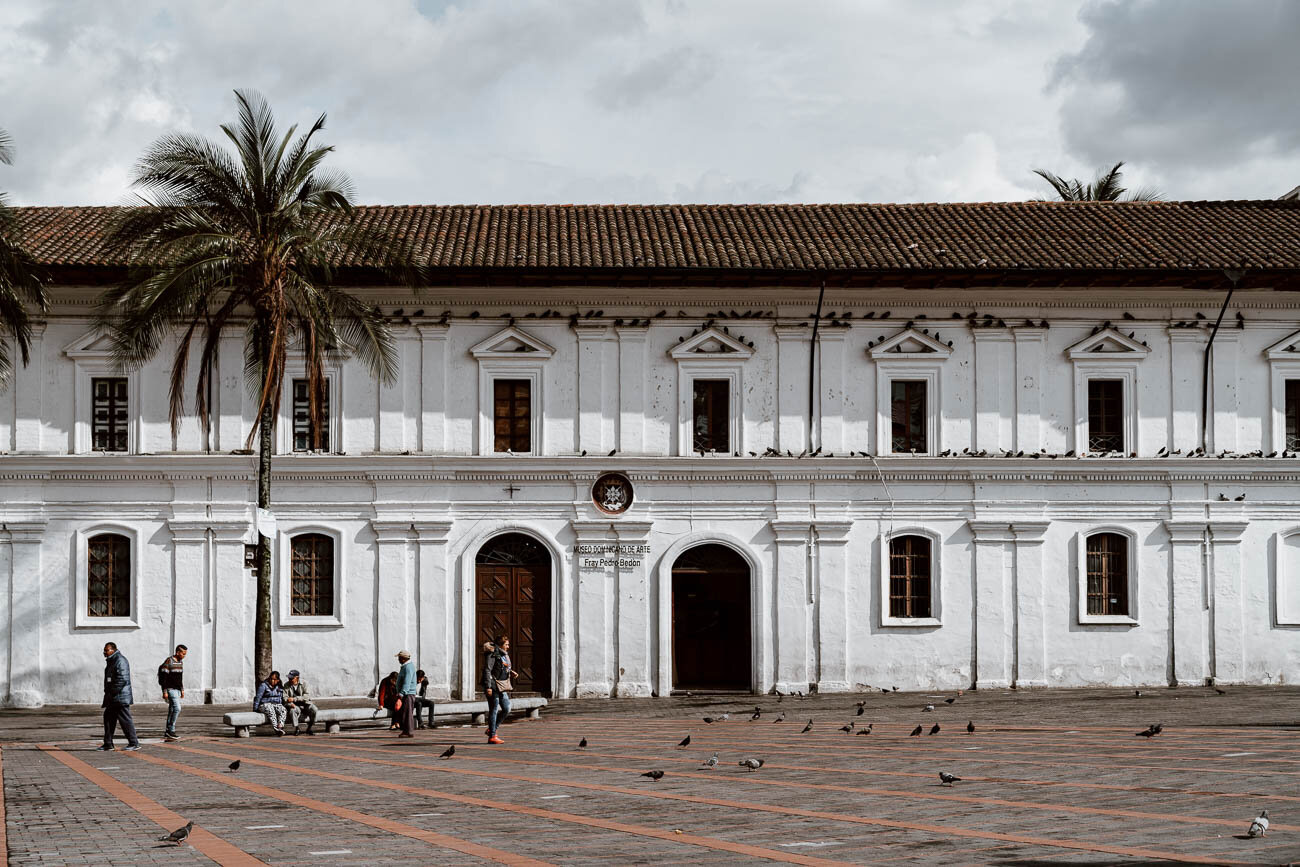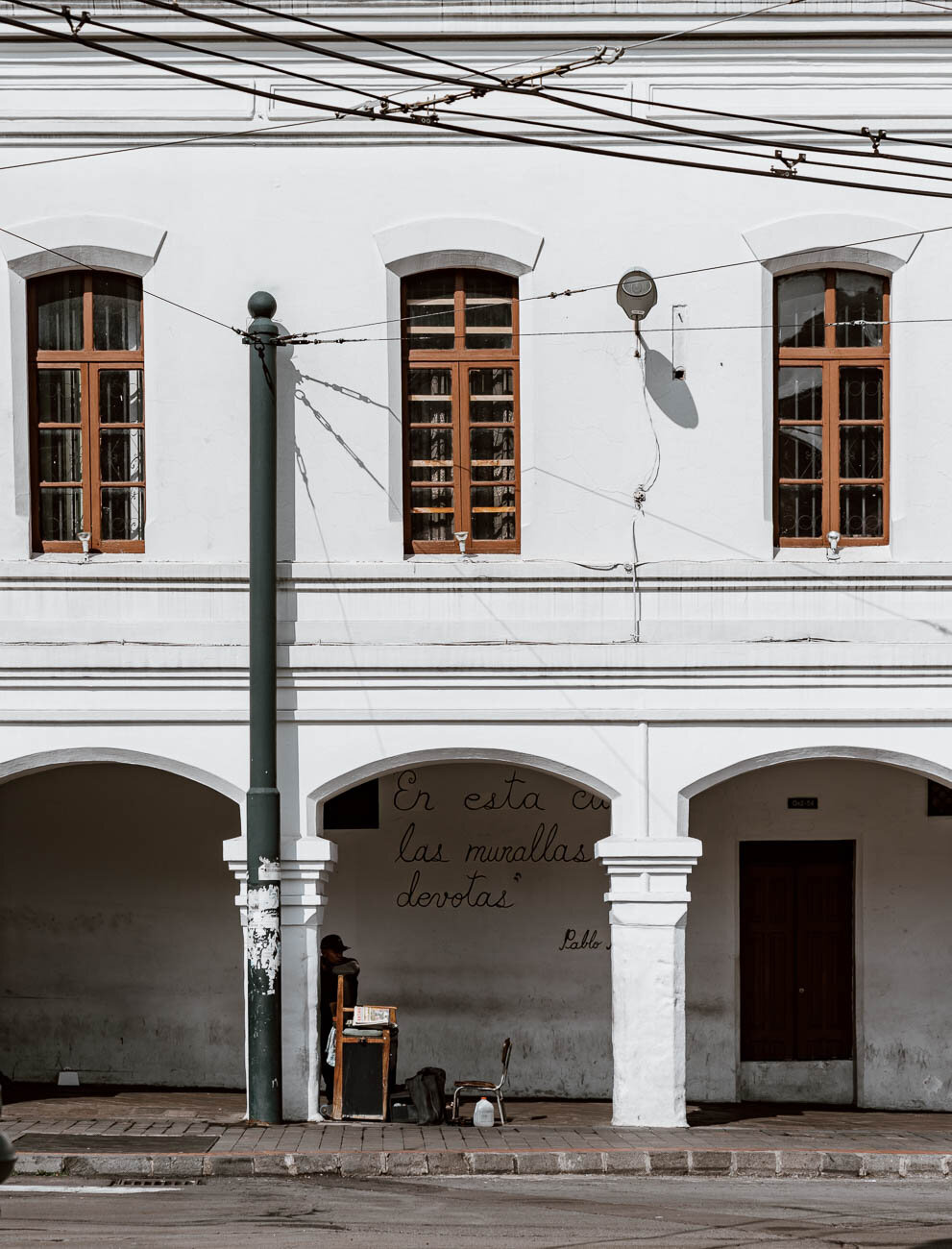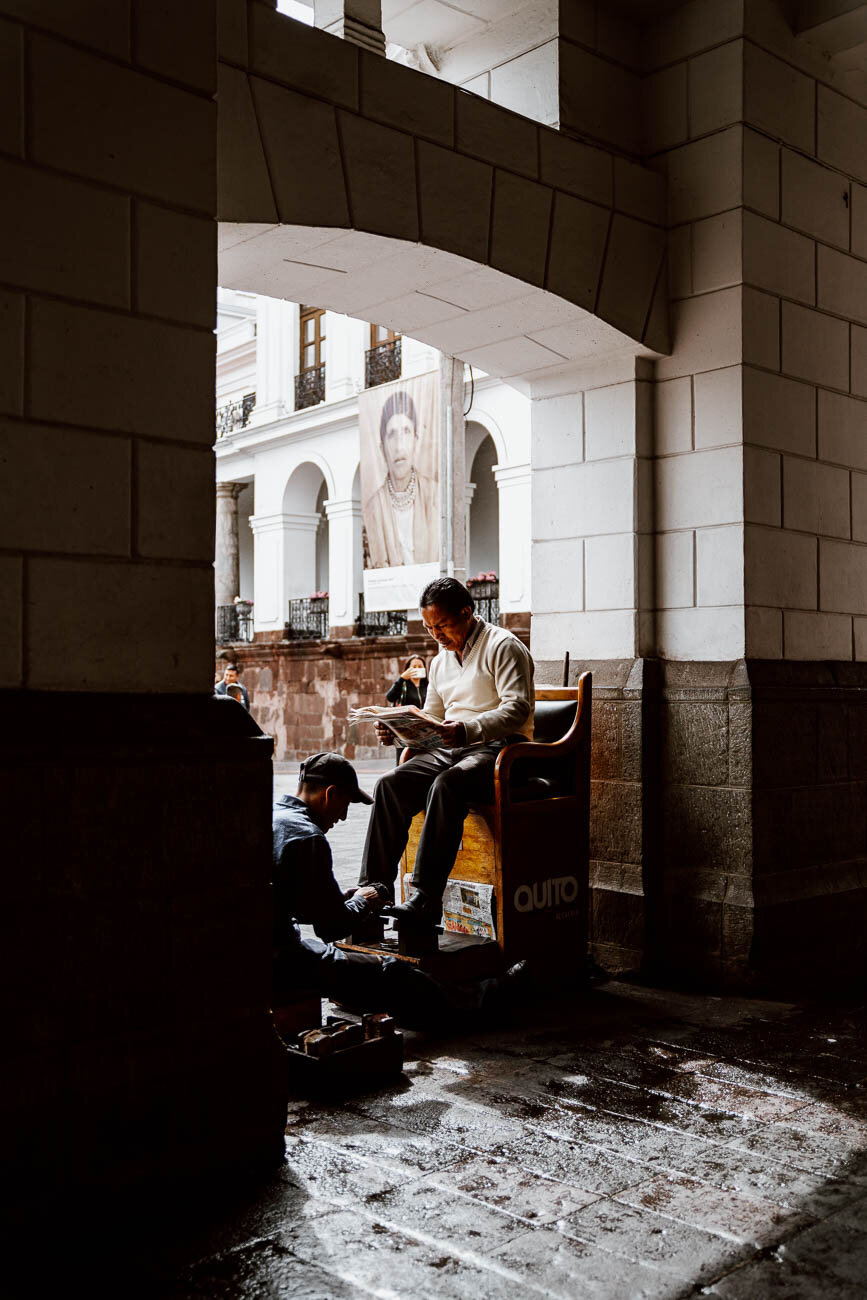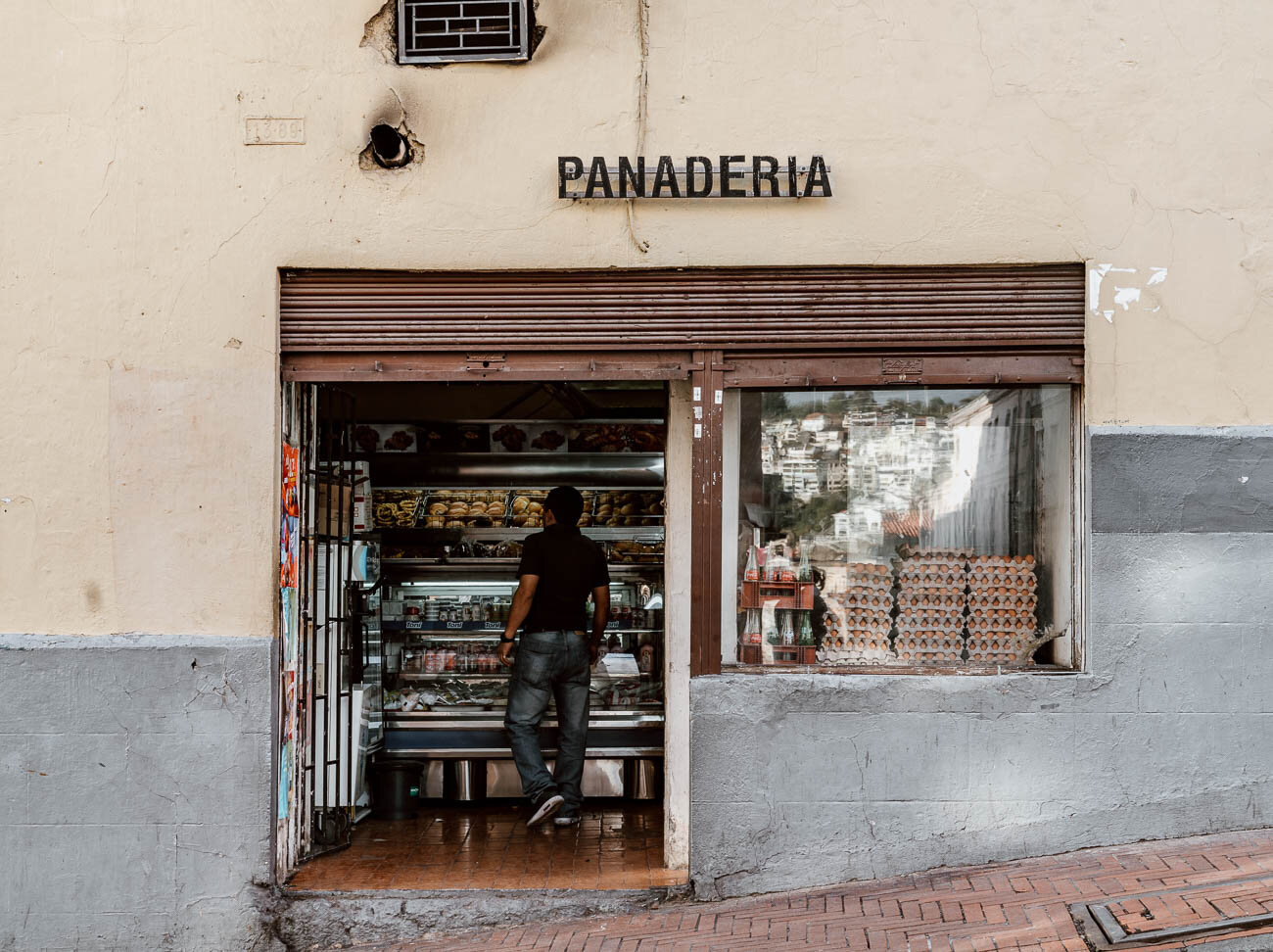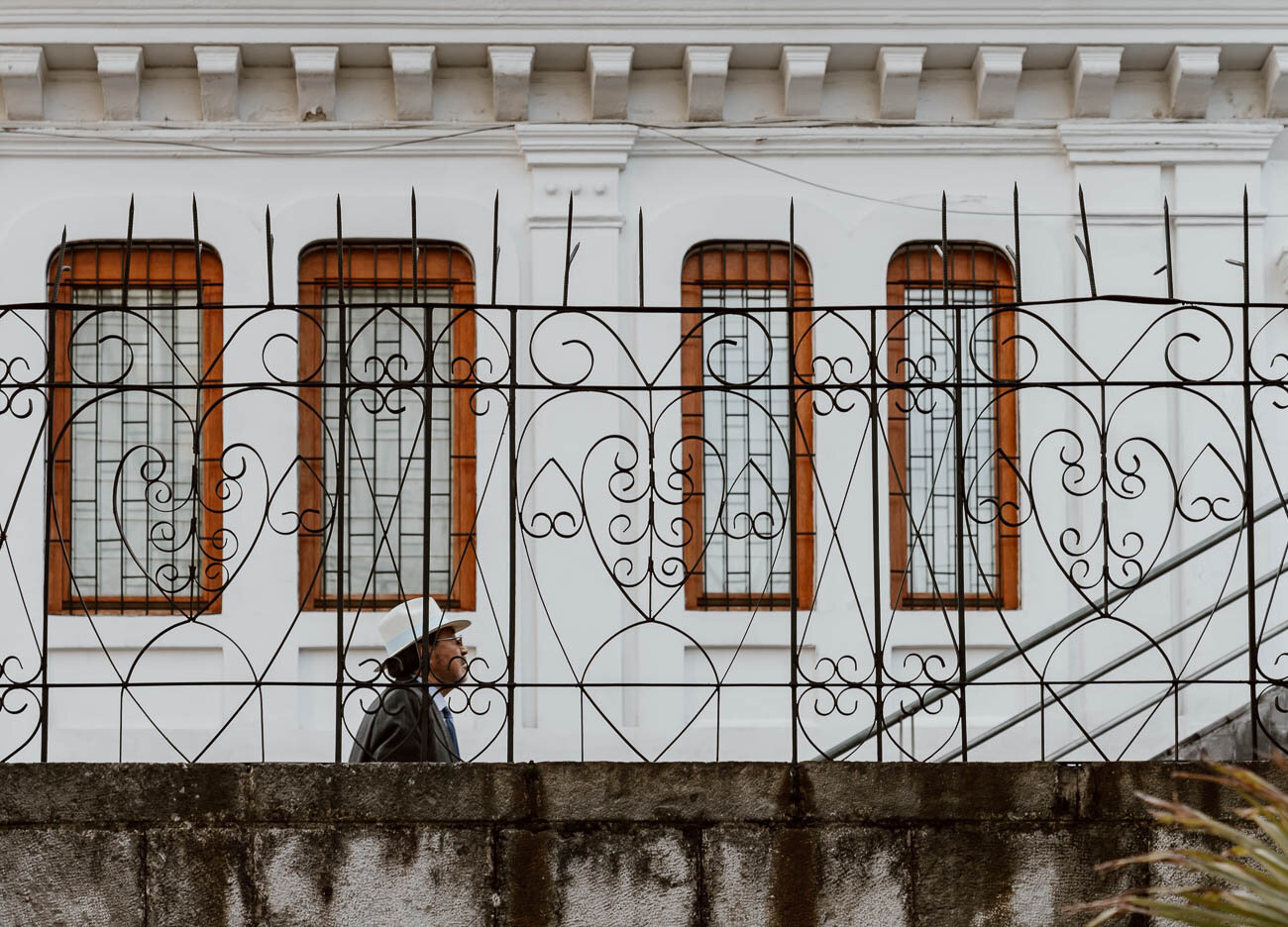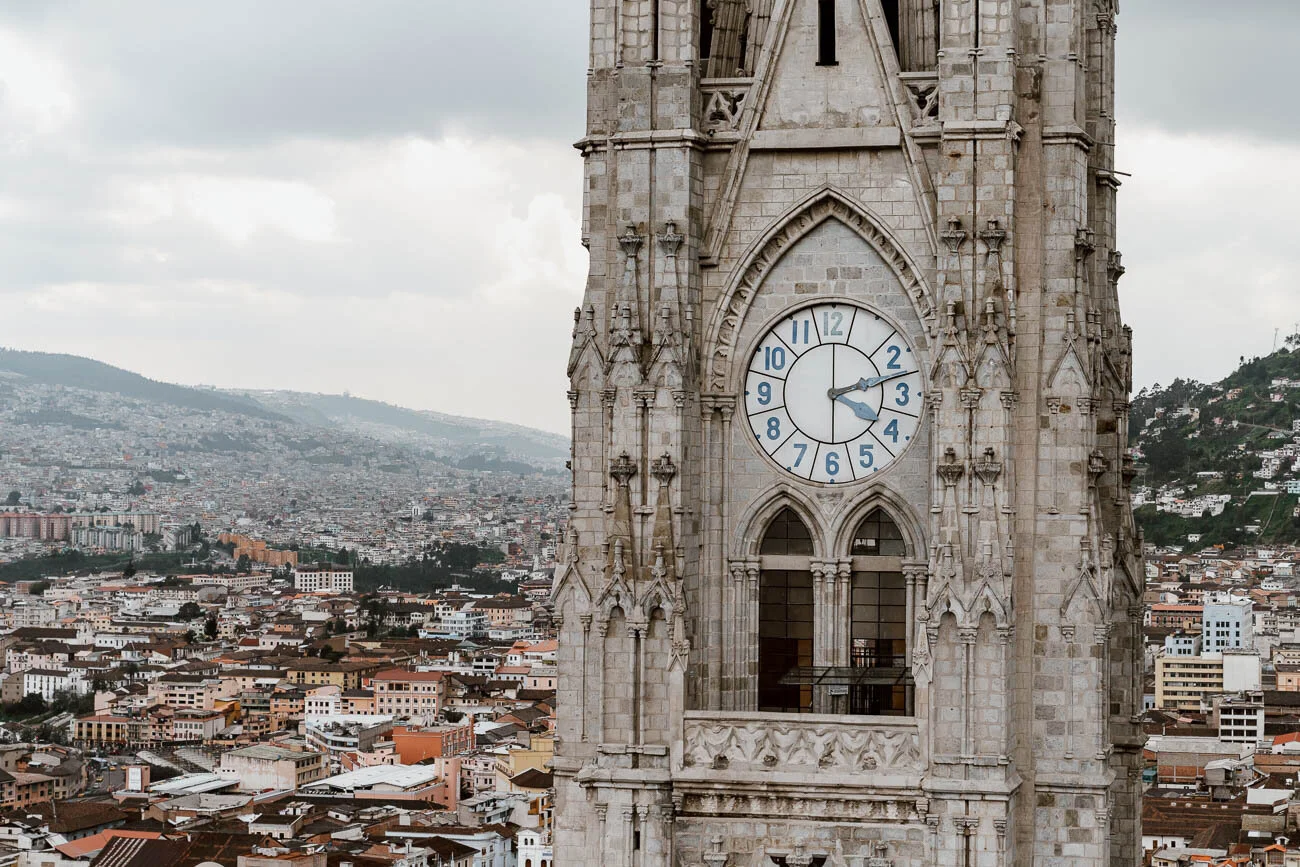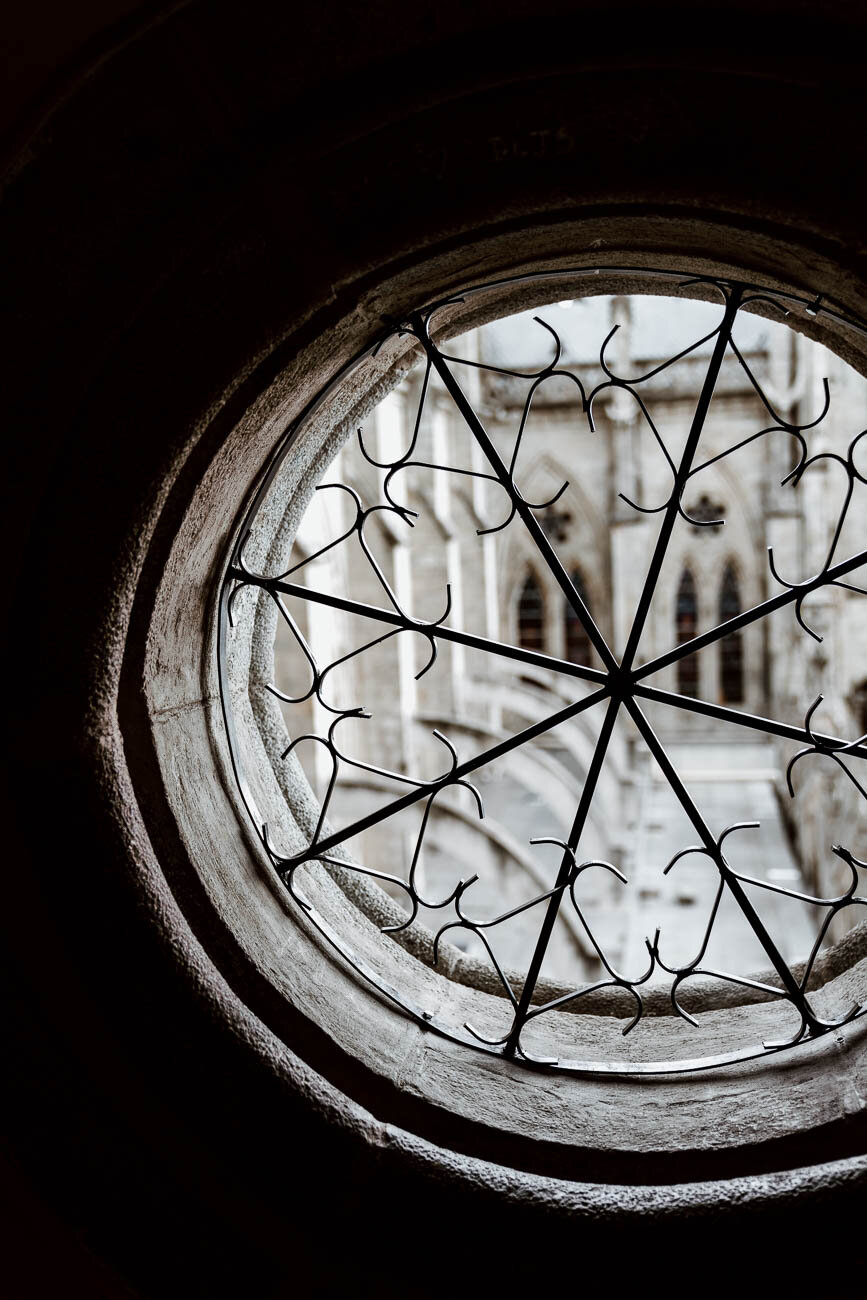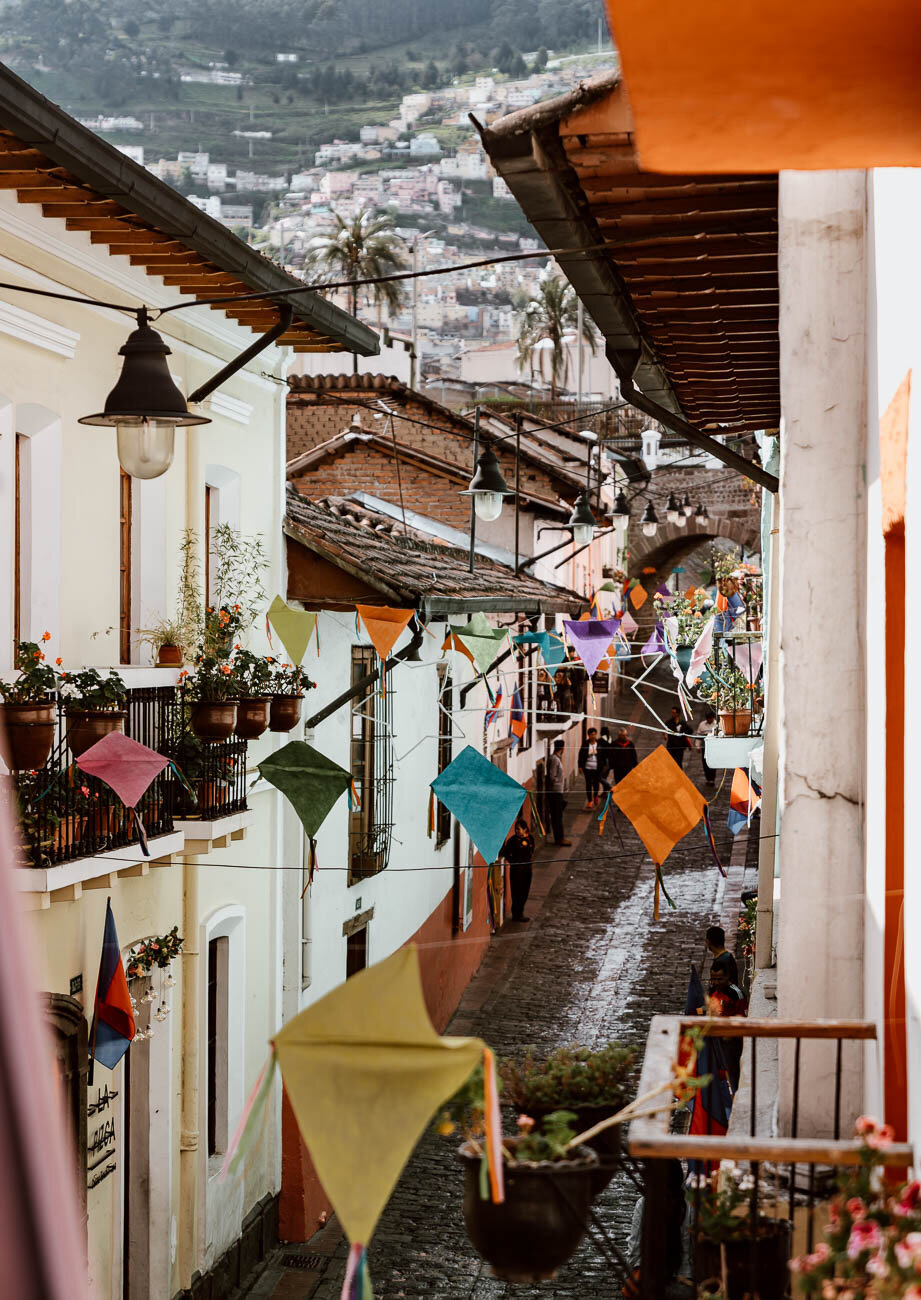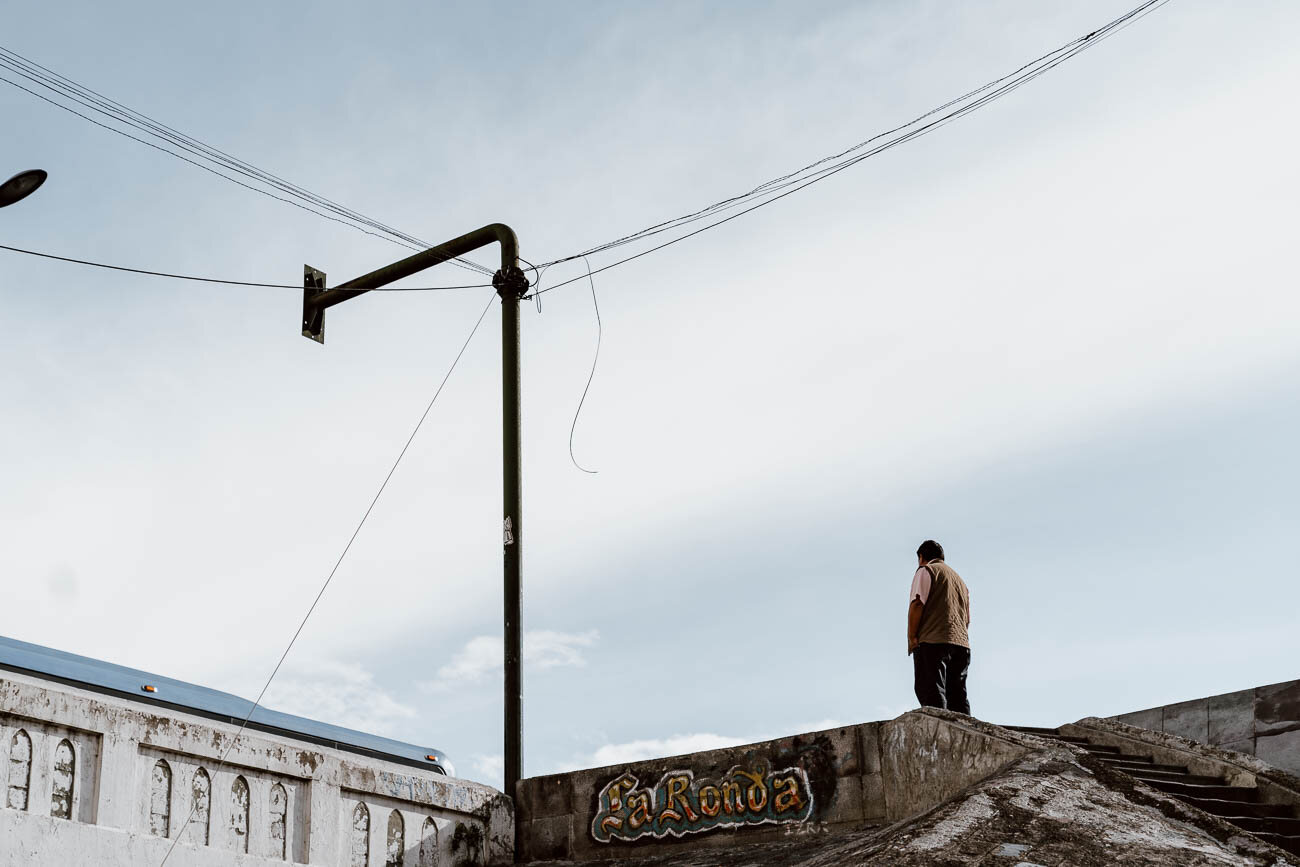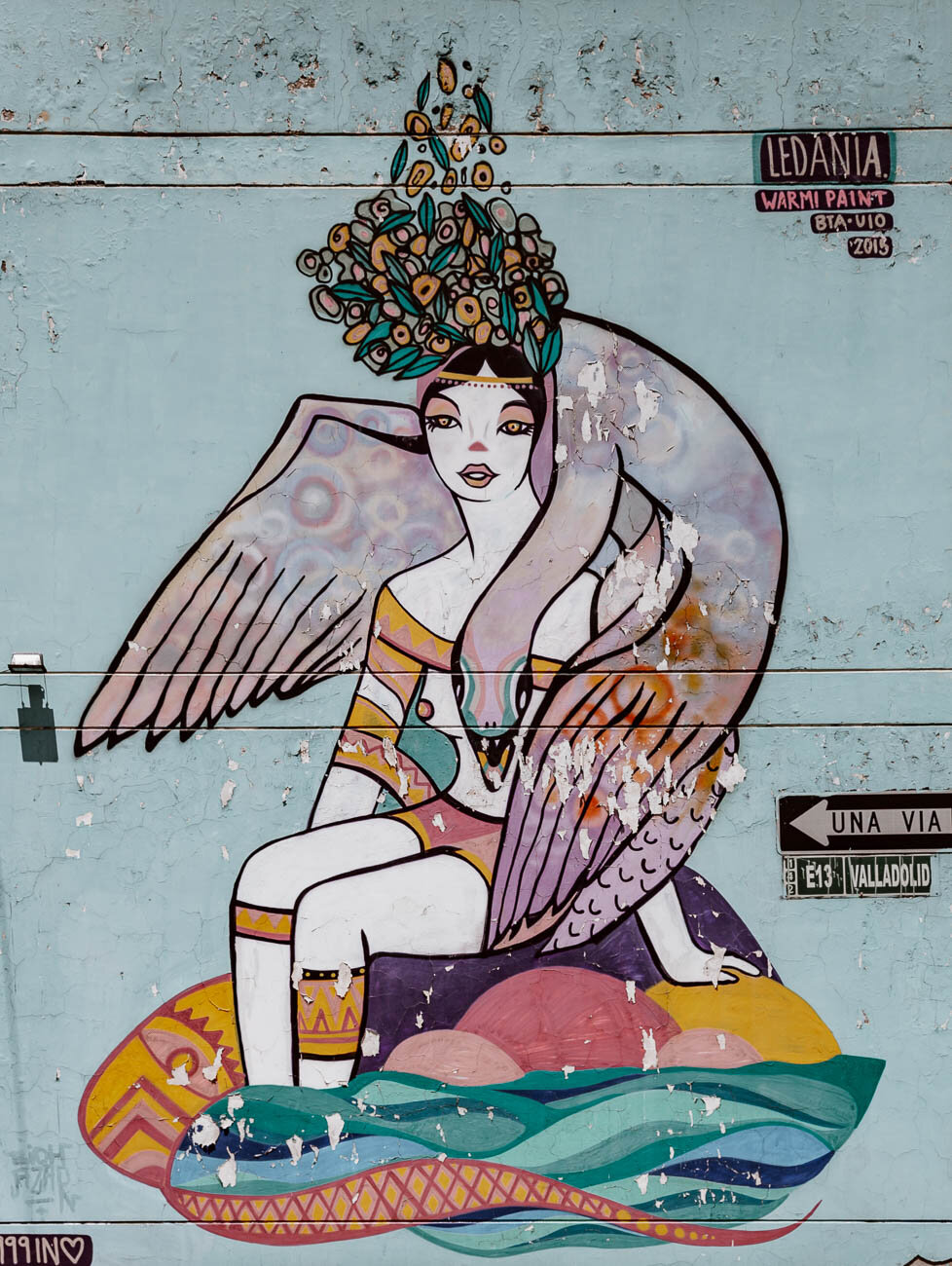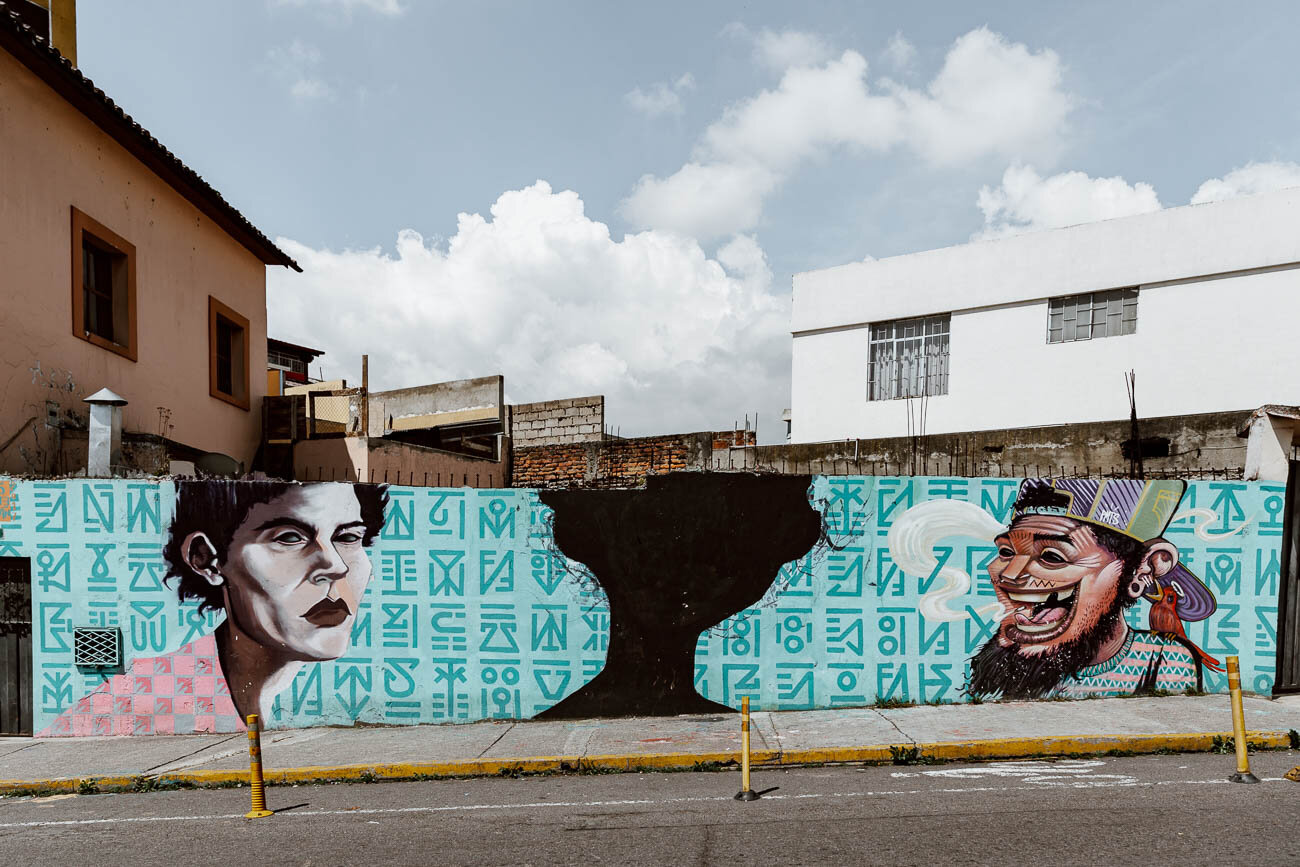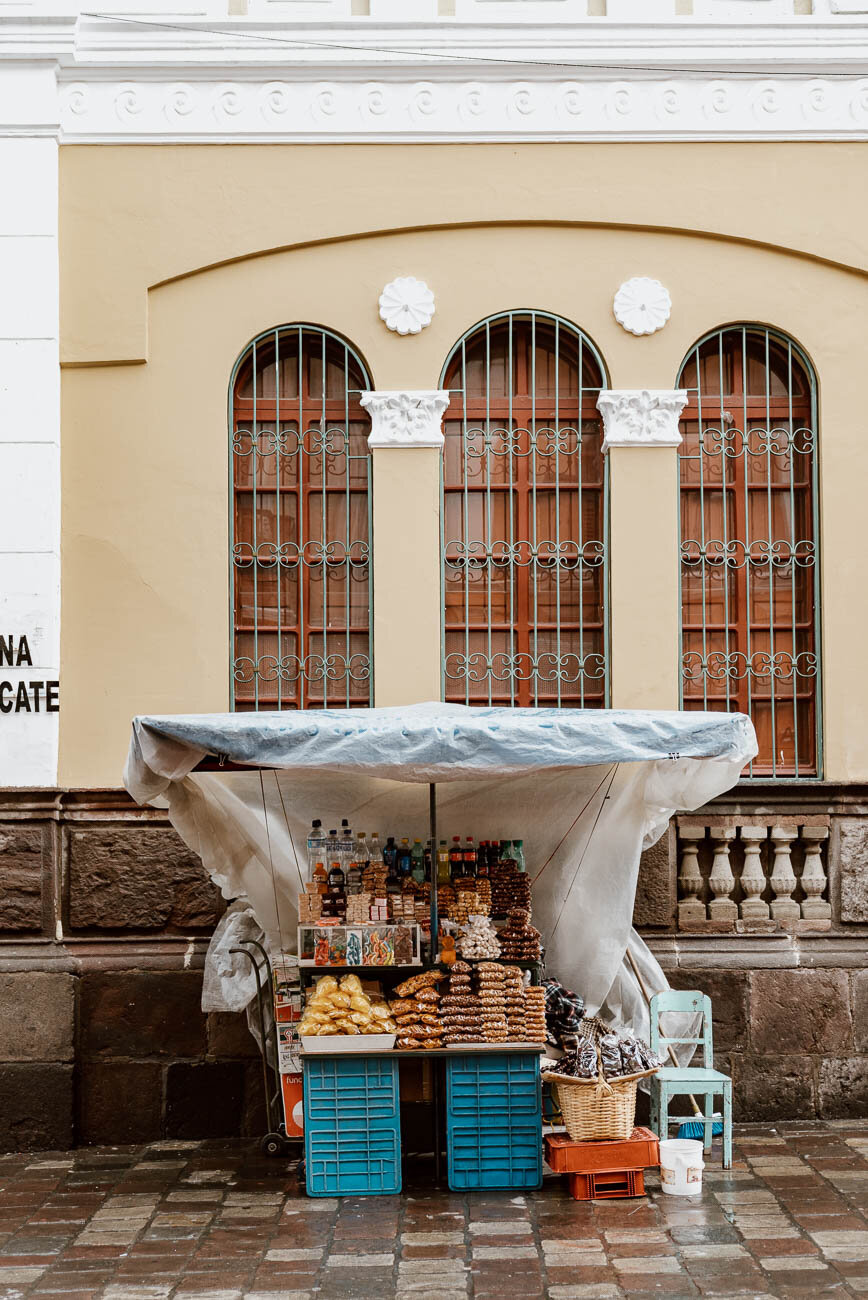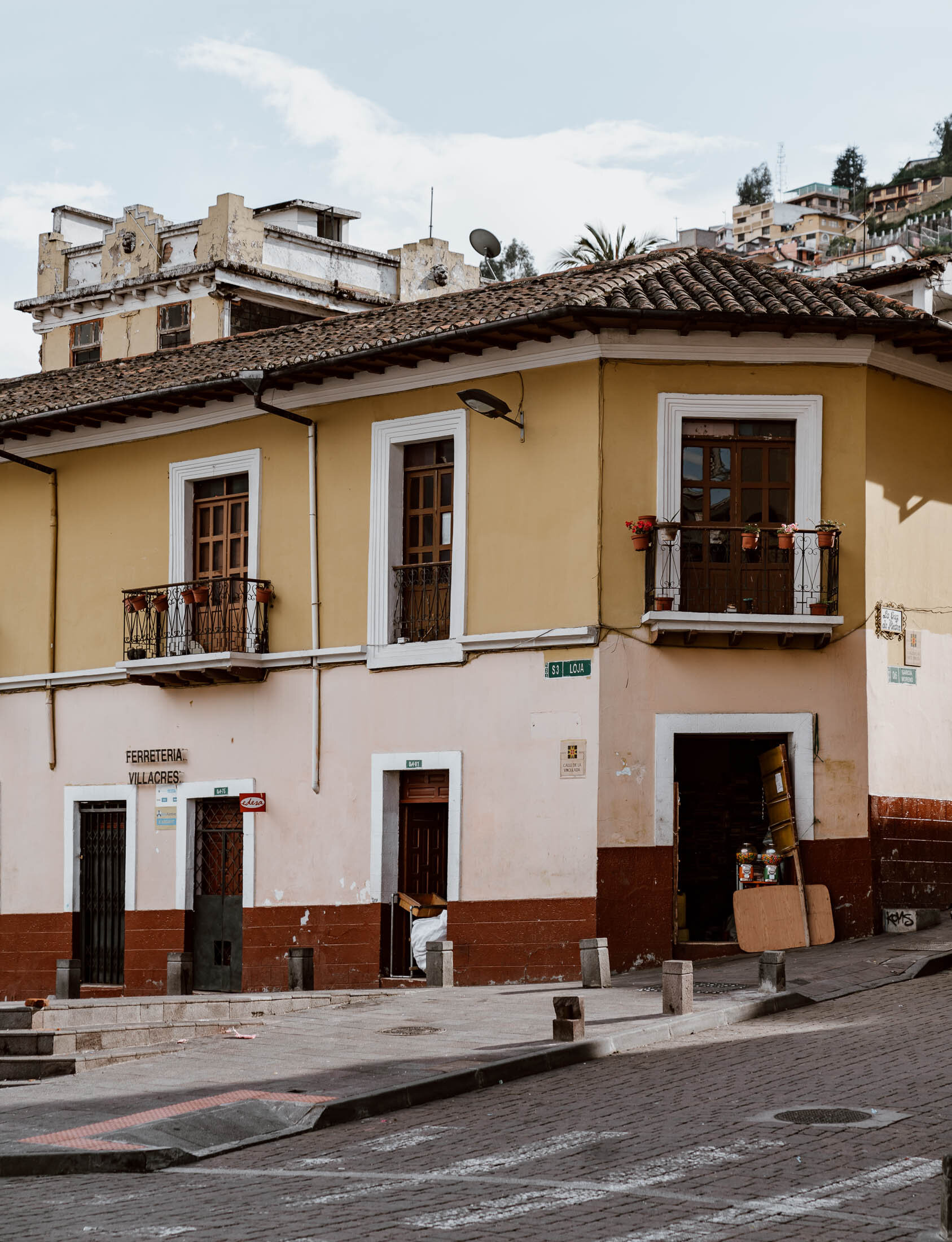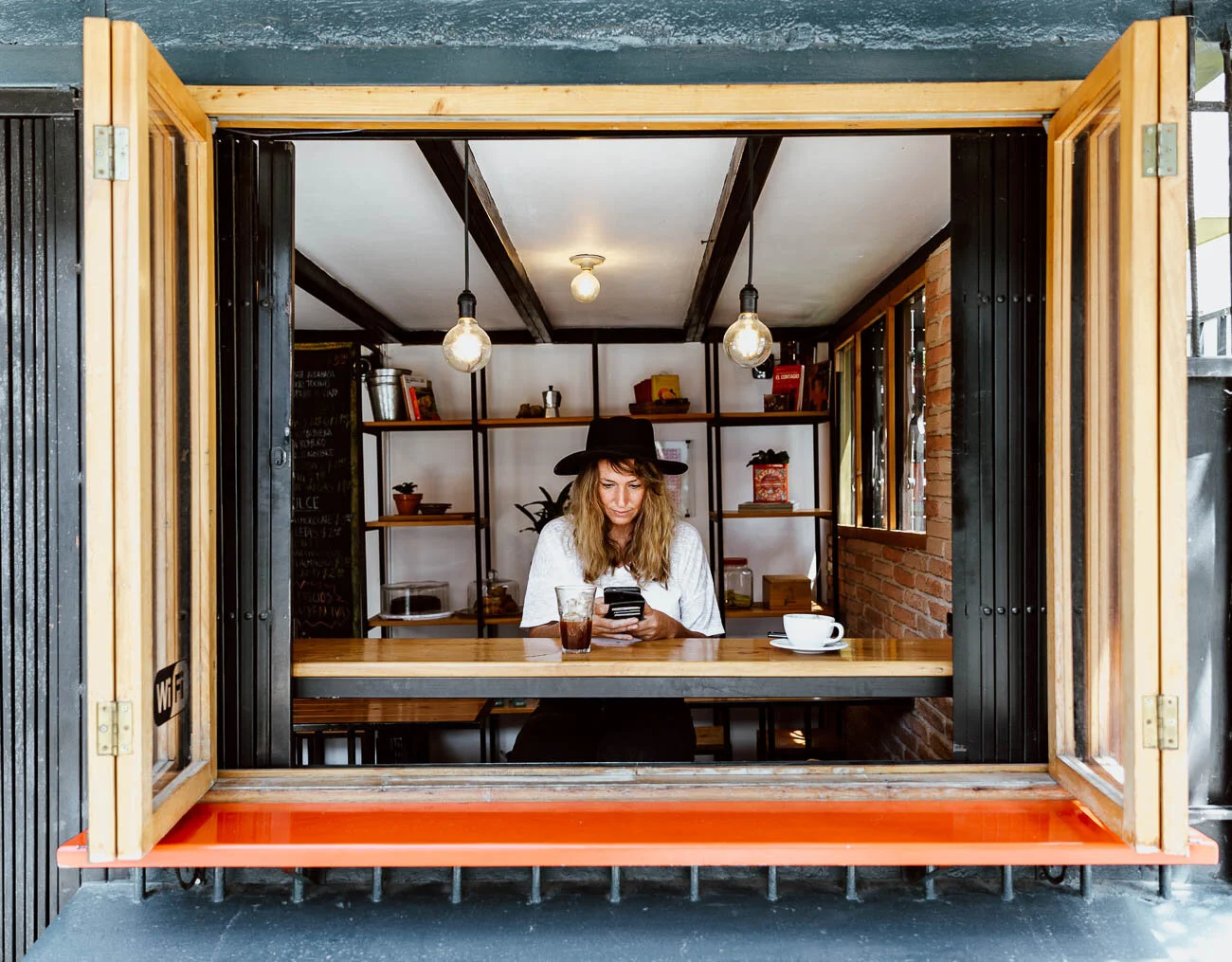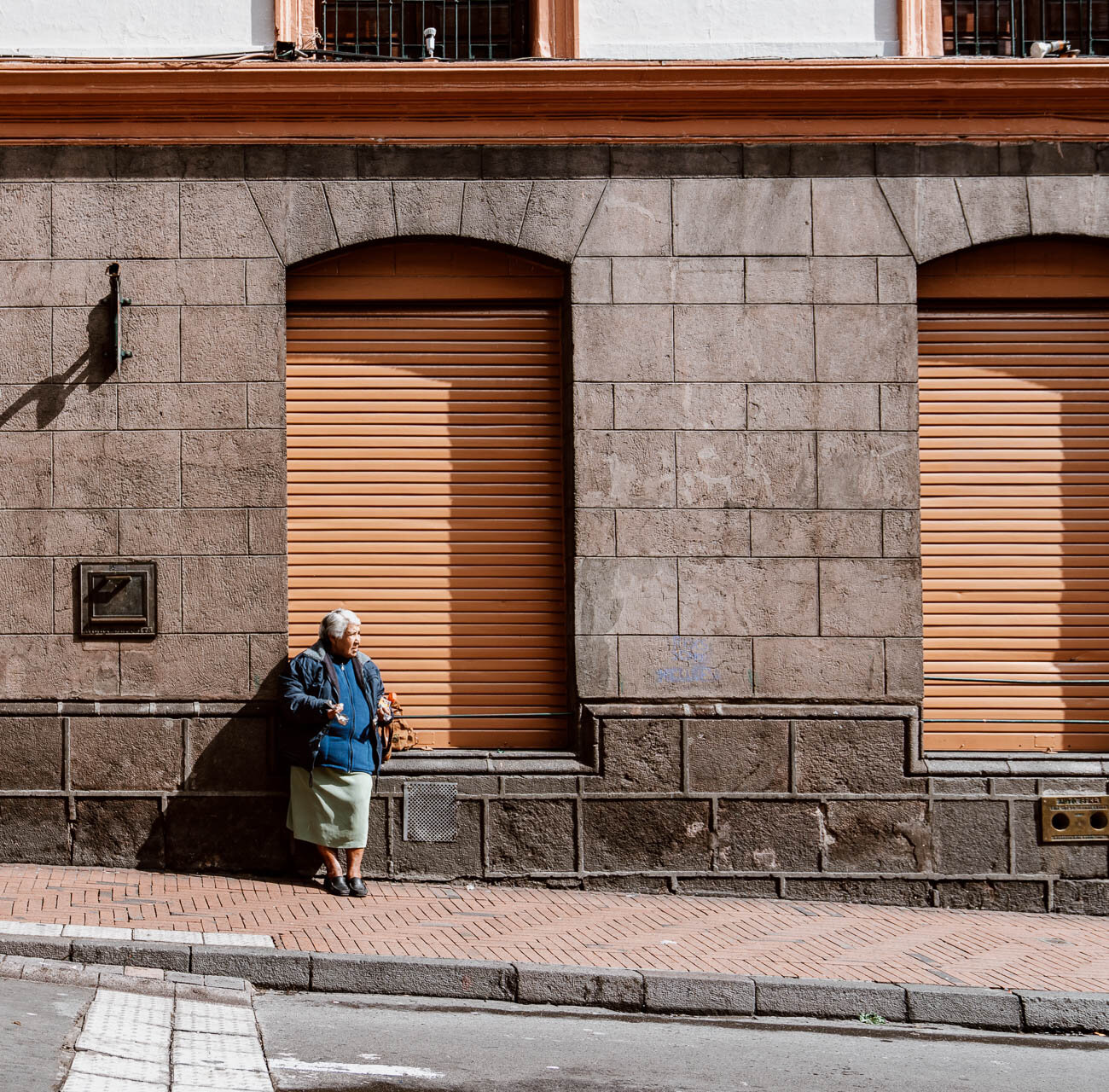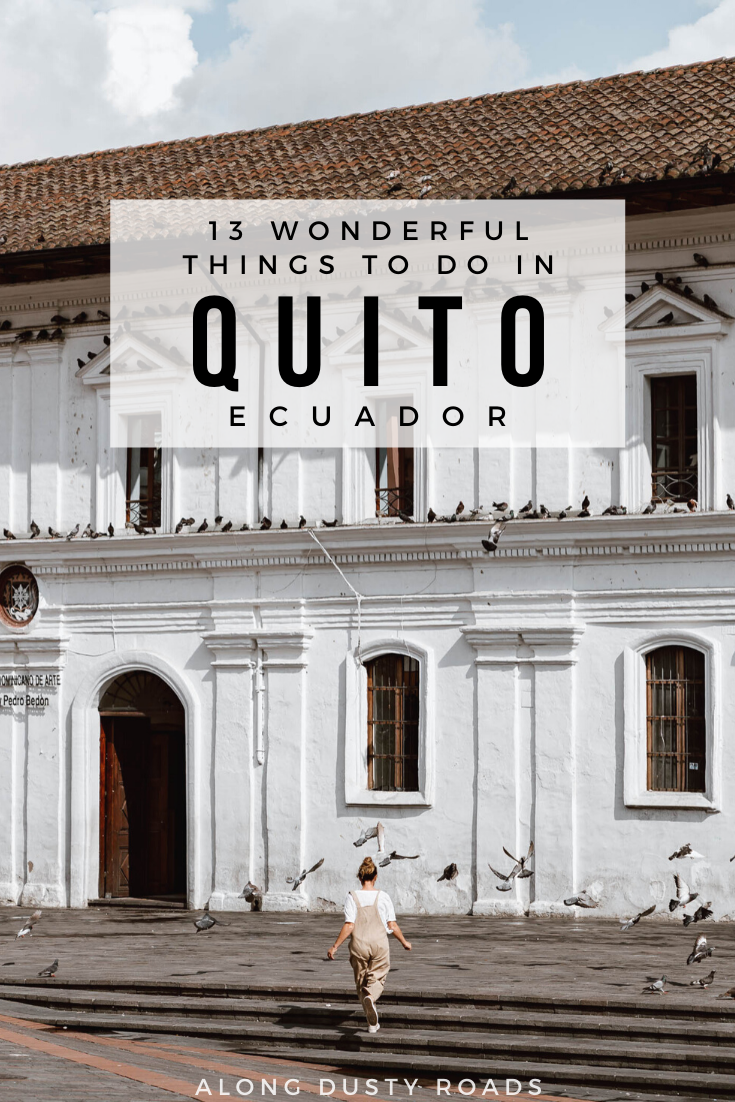The capital of Ecuador and a UNESCO world heritage city to boot, Quito has much to offer the short-trip curious traveller or long-term hipster backpacker.
In this post, we bring you a comprehensive insight into our favourite things to do in Quito - both the popular and the unique.
Updated March 2023
The city of Quito is a little lacking in love.
Frequently passed over by those travelling from Colombia to Peru, it oft serves solely as a transit point or brief sojourn for travellers making tracks to the Galapagos islands to the west, or the Amazon to the east.
Across our own two South America trips, we’ve spent more than two weeks in Quito but - truth be told - have yet to fall head over heels with it.
Perhaps it’s the weather, a seemingly endless parade of grey cloud that dampens the mood, or the chilly nights that appear unavoidable when you are so far above the seas. Or that, whenever we’re in Quito, so too is the rain.
And yet this city nestled amongst snow-capped Andean peaks is undeniably beautiful in parts, with a UNESCO-listed historic centre teeming with life, sounds and the pops of colour and character that one would expect in Ecuador's capital, as well as a myriad of impeccably preserved colonial era buildings simply begging to be explored.
For us though, it’s the bohemian barrios of old and new that set Quito apart from the country's other large cities.
Dig deeper and you will discover a buzzing creative scene replete with independent cinemas, political street art, excellent coffee shops and craft beer; a new Quito that deserves its place on, not just your Ecuador, but your South American itinerary.
Here are 13 wonderful things to do in Quito - most of which you can do come rain or shine - which will help you make the most of the city and maybe fall a little more in love with it that many travellers do.
13 Wonderful Things to do in Quito Ecuador
Visit La Capilla Del Hombre Museum
Oswaldo Guayasamín is, by most accounts, Ecuador's greatest artist.
A man fiercely vocal against racism and political oppression, both through his work and his words, he spent his life supporting the indigenous of Ecuador - a theme that crosses and underpins much of his work.
It is Capilla del Hombre (the ‘Chapel of Man’) however which is considered by many to be his greatest achievement. Conceived in 1985, and supported with UNESCO funding, this part monument, part museum is, in the words of Guayasamin himself "a gathering centre, a place where you can meditate on the trajectory of humanity in this continent, for millennia, until today".
The impressive three-level cultural complex, a modern recreation of a pre-Colombian temple, houses an incredible collection of the artist's work, peppered with moving quotes and an eternal flame dedicated to those who died defending human rights.
It is, in our opinion, a non-negotiable thing to do for visitors planning their time in Quito - especially when paired with Case Museo, located only a few minutes’ walk away.
When Guayasamín passed away in 1999, his home, his possessions, and his art collection were bequeathed to his family on the understanding that they must not be split or divided; this stipulation is how Casa Museo came to be. As Spanish speakers amongst you may have surmised, it is literally a museum of his house, as well his cavernous studio and stylish gardens. His personal art collection and the design features of the vast houses are worth the visit alone, whilst the photography of Guayasamín with so many icons of the 20th century serves as an insight as to just how influential the artist was for decades.
Visits to Casa Museo are only possible as part of a guided tour, and it’s a must for anyone with an interest in architecture, art and the life of a visionary artist from humble beginnings. The group tours leave at least every hour, and include an English-speaking guide - when you arrive at the entrance, they’ll let you know when the next one is starting.
Where | Calvache E18-94 & Chávez (Google Maps).
How to get there | La Capilla is located in the north of the city, and whilst you could feasibly get public transport there, we'd recommend instead taking a taxi/Uber (the service widespread in Quito). It should cost only a couple of dollars, depending where you're coming from. There are taxis outside for the return trip, and they’ll quote you more than you paid to arrive.
When | Both La Capilla del Hombre and Casa Museo are open Monday to Sunday, from 9.30am to 4.45pm. Allow at least a few hours for your visit.
Cost | The $10 ticket includes entrance to both (students, children etc pay $5)
Explore the Old Town
Despite the modernisation that has happened throughout the city in last century - not to mention the large earthquake that decimated much of it in 1917 - Quito’s historical centre has remained intact and incredibly well preserved.
As we always say (literally, always), the very best way to explore any old town is with a camera, an inquisitive mind and a desire to just wander. Starting from Plaza Grande (more on that later), the majority of must-sees in old Quito can be found within a 15 minute walk in any direction.
These are some of the buildings you may like to visit along the way:
Presidential Palace (maps) | Found in Plaza Grande, this can be visited on a free tour but reservations must be made in advance (Tuesday to Sunday 9am – 4pm, contact ucultural@presidencia.gob.ec for a tour request).
Catedral Metropolitana (maps) | Quito's official cathedral, this church is said to be one of the least ornate churches in the city, although we found it to be rather pretty from the outside! This is where you'll be able to take a look at 'The Last Supper' where the disciples are eating cuy (guinea pig, a popular dish in parts of Ecuador). Entry is $4 per person, and a further $4 to enter the dome.
Plaza San Francisco (maps) | This vast cobblestone plaza is an absolute must visit with the imposing white-washed walls and bell towers of Quito's oldest church (St Francis) to one side, and a view of Volcán Pichincha to another.
La Compañía de Jesus (maps) | Described by Quiteños as the most beautiful church in Ecuador, this is probably a place we should have entered - but regrettably the $5 entry fee put us off (hey, that’s just what happens when you’re travelling on a budget). With an interior gilded entirely in gold, it is certainly the city's fanciest.
La Merced (maps) | Another of the city's white-washed churches, free entry means it's worth popping inside for a few minutes.
Convento San Agustín (maps) | A fine example of 17th century Moorish architecture, it's probably the only historical/religious site you'll visit decorated with pineapples! It’s open 9am - 12.30pm then 2pm - 5pm Monday to Friday, 9am - 12.30pm on Saturdays and closed on Sundays. A one hour tour costs $2.
However, we'd actually implore you to go further and find your own way too, rather than just visiting various churches in the old town. Take the small back streets, go left instead of right, pop into little local restaurants for a cheap almuerzo, and find your own intrigue.
Travel Tip // On your wanderings, be sure to take a stroll by Café Aguila del Oro (maps). A coffee shop in the most traditional sense, this old school roaster and grinder is full to the brim with old school equipment that will make the vintage lovers amongst you drawl.
Watch the world go by in Plaza Grande
They come in all shapes and sizes, but one thing every town, city, and even village in Latin America has in common, is a central plaza. And whether you’re in Ecuador for a few weeks or a few months, please take the time to sit in Quito’s Plaza Grande in the morning and late afternoon and just watch a different world to what you’re used to back home.
Mestizo men in suits sitting alongside indigenous woman, the layers of colourful skirts cushioning the old wooden bench beneath. Guys in hospital whites serving drinks and snacks out of carts with three wheels. Each arch of the buildings that line the perimeter becomes an office for a local shoe shiner, their worn hands thumbing yesterday’s newspaper as they await their next tip.
Noise, chatter, children and pigeons, the soundtrack of a city that rarely sleeps.
We're not ashamed to say that we spent hours in this square, photographing and watching life as it unfolded in front of us. Whilst some of you many not be so enthralled by ebb and flow of citizens in this four-sided microcosm, we highly recommend taking the time to sit and observe, even for just a little while.
If you’re in Quito on at the beginning of the week, we highly recommend timing your visit to the Plaza with the changing of the guards which takes place every Monday morning at 11am. You’ll even get a chance to see the President of Ecuador, as he pops out onto his balcony and waves at the crowds below.
Do be aware that the square gets understandably busy during this weekly event so get there early enough to bag yourself a spot.
Travel Tip // Only in the city for a day or so and want to ensure you don’t miss the main highlights? Consider joining a walking tour. There are a surpassingly large number offered by various Quito based companies, including a popular one offered by our favourite hostel, The Secret Garden. You can also book this one in advance.
If you’d prefer to dig a little deeper into he history of Quito, consider joining this highly-rated full day tour that includes many of the city’s most popular attractions including the Cathedral and Mitad del Mundo
Alternatively, this one is a little more food and drink focussed and includes street food stops, coffee, chocolate and even a cocktail!
Try the local speciality
Chocolate con queso.
Even after trying Quito's speciality of hot chocolate with a big 'ole piece of white cheese, we still can't decide whether it's a little odd or the greatest culinary decision ever for a city that tends to be on the chillier side.
To enjoy it like the locals do, break up the cheese into little chunks and plop into the hot chocolate, allowing the cheese to settle at the bottom and deliver a punch of salty sweetness with each sip. And the cheesy melted loveliness at the bottom of your mug? Devour with a spoon once you've finished!
There's a local saying 'chocolate sin queso es como amor sin beso' (chocolate without cheese is like amore without a kiss). One hot chocolate in Quito, and you may just agree!
Top tip // We sampled this treat at a small café in a nondescript street but some people say that the city’s best is found at stall 109 in Mercado San Francisco, where it’s made with love by a lady named Mercedes. This also allows to tick off one of the city’s other ‘top things to do’, and exploring the San Francisco market!
Sample the Craft Beer
Whilst we're all for cheap bottles of local beer (as our ever-extending midriffs will attest to), all that light lager can become a tad tiresome if you're travelling for a while.
And so, during our second trip - and with a little bit more money in the back pocket than our first super-budget two year Latin America adventure - Andrew did a little happy dance upon realising that Quito had several excellent small batch, craft beer bars dotted across the city.
Bandido Brewing (maps) is the standard favourite - and therefore the first one we tried - with a great happy hour from 4pm to 7pm Monday to Friday, but others that come highly recommended are La Oficina (maps) in the old town, and Abysmo Brew Pub (maps), Santa Rosa Cerveza Artesanal Bar (maps), Bandidos del Paramo (maps) and Los 3 Monjes (maps) in the new town.
Be sure to also check out Zambo Creek Microcervecería, an all-female brewery that's working to change Ecuador’s male-dominated beer industry and support local agriculture.
Travel Tip // If you'd like a side of culture with your boozing, consider taking this craft beer tour. You'll visit three bars (via private transport), have a beer at each and possibly meet the brewer.
Climb the Basilica Towers
We're not church people. Not in a 'we hate God' sort of way (although a Catholic high school didn't really help Emily much on that front).
It's just that, well, there's an awful lot of them across South America, and you can’t really wax lyrical about (or visit) them all! This means we’ve just become a bit more selective about those we’ll make time for and those we’ll skip.
During our second visit to Quito, the wonderful Notre Dame inspired Basilica del Voto Nacional, made the cut.
Decorated with stone turtles and iguanas instead of the more traditional gargoyles, the still ever so slightly unfinished (local legend has it that the day it is finally completed, the world will end) basilica's crowning glory is its twin towers which can be climbed for spectacular views over the rooftops of Quito and a handful of colourful basketball courts.
One probably best avoided by those with a fear of heights, you get this view after you take a lift you cross the roof via a wooden gangplank (it's relatively stable, we promise) and heading up the very narrow metal staircase which wraps itself around the tower.
As one of the best things to do in Quito, the towers can become quite busy, so if you're concerned you may freak out a little then it’s best to head up nice and early to avoid the crowds!
Where | Found on the corner of Venezuela & Carchi, within walking distance of the old town - Google Maps.
Cost | It's free to enter the basilica, but if you want to climb the towers (hint: you want to climb the towers), it's $2 per person. You can find the entrance and buy your ticket on the narrow front of the church, through the central door with the heart-shaped window.
When | Open from 9am to 5pm every day (til 6pm Saturday & Sunday). There are also a few cafes and small gifts shops outside the church.
Did You Know? // This is the largest Neo-Gothic church in the Americas.
Day Trip Idea
Did you know that the official middle of the world is located just 26 miles from Quito?
A hugely popular day trip, it can be done independently via public transport - head to Ofelia station, then connect on to the clearly marked Mitad del Mundo bus for $0.40. The journey takes approx 1.5 hours. one-way.
Alternatively, you can visit as part of an organised tour with transport and a bi-lingual guide.
Entry costs $5 per person.
Hang out in the ‘la floresta’ neighbourhood
Community art studios, hipster restaurants, independent coffee shops, contemporary art galleries and a vibrant street art scene. There is no doubt: La Floresta is the undeniable epicentre of Quito’s thriving art scene.
But to visitors passing through, all of this may not be immediately obvious. We spent several hours roaming the streets of La Floresta, and whilst they are undeniably colourful and the alternative vibe is clear, we couldn’t immediately find many things ‘to do’ - a conversation with a Quiteño a few days later explained that this is part of what makes La Floresta such an enjoyable place to live. As it turns out, this barrio has fiercely resisted gentrification and it is a place led by the community, which means that unless you are part of the community and in the know, it may seem a little, well, empty.
If you would like to explore the neighbourhood independently, we’d recommend visiting in the week if possible (when we were advised that more places were open), and be sure to add these spots to the list.
Ocho y Medio | Founded in 2001 by a group of film makers and artists keen to promote cinematic culture to a local audience, this indie theatre in the La Floresta neighbourhood shares screenings of international and local independent films, and even has it’s own ‘film festival’. Find the theatre here.
La Floresta Mercado Agroecológico | A local market where you can shop for local produce or indulge in a you can pick up produce or a hearty $3 almuerzo (a customary three-course lunch) from 20-plus vendors. You’ll go to Botánica for the artisanal panini and fig cheesecake; you’ll stay for the ambience. The welcoming space is adorned with found objects and greenery — a nod to the section’s agrarian beginnings. Find the market here.
La Huerta y La Máquina | Primarily aimed at the local community, ‘La Huerta’ teaches the art of horticulture, whereas ‘La Máquina’ allows people to learn how to upcycle old furniture, or create new. For the tourists they have regular art exhibitions - find it here.
Libertina Tienda Galería | An independent boutique ran by designer Tifa Torres, Libertina is a space where a number of independent designers can sell their wares. You’ll discover clothes, furniture, art, as well as a cute little coffee shop. Find the the shop here.
La Cleta | The definitive hipster hangout in La Floresta, this little bicycle café provides excellent coffee and beer in equal measure. It's also an great place to hangout at the weekend, with the evenings being particularly lively! Note that it opens from late afternoon onwards - find it here.
Trude Sojka Cultural House | Trude Sojka, a celebrated Czech artist, was also a Holocaust surviver who fled to Ecuador upon liberation from Auschwitz. Shortly after her death in 2007, her daughters decided to convert her old home into a memorial - both to her life’s work (the house is filled with her paintings and sculptures) but also as a testament to the atrocities that she endured during the Second World War. This is unfortunately somewhere that we did not know existed until leaving Quito, but others that have visited have found it incredibly moving, and recommend it highly. Find it here.
Travel Tip // If you’re in Quito for at least a couple of weeks, we’d actually highly recommend La Floresta as a base. This is a great Airbnb option in the neighbourhood. Airbnb is actually the most affordable accommodation option in Quito for travelling couples and families - take a look at the 23 Best Airbnbs in Quito post for more information.
Stroll down La Ronda
Known as the prettiest street in all of Quito, a stroll down La Ronda is a rite of passage to all that visit. Once the home of bohemians, artists and political activists, it witnessed somewhat of a downturn at the end of the 19th century, its neglect attracting the less desirables and the buildings falling into disrepair.
Fast forward to 2006 however, and La Ronda has been magnificently restored to become one of the old town's most cherished streets. Colourful walls and architecture not out of place in Andalusia, bright floral balcanoies, and, hidden behind old wooden doors, courtyards of artisanal shops, museums, art galleries and restaurants.
Whilst La Ronda is a delightful place to visit any time of day, although on the verge of becoming a little too touristified, we'd highly recommend planning your wanderings to begin when the sun goes down. Candle-lit lanterns light the way and the street comes alive with traditional music, tempting locals and tourists alike into one of the many bars for a drink - or, more specifically, a glass (or jugful, as evidenced by a very merry Ecuadorean family) of canelazo, a Quiteño tipple of citrus fruits, cinnamon and cane sugar liquor.
Beyond La Ronda | Heading toward the large square at the end of La Ronda (Plaza de los Periodistas), turn right and you'll find Nina Shunku, an art collective hub with exhibition spaces, artists - and even sound studios. There's also a great little restaurant in a graffiti heavy outdoor area. Technically it's open to visitors daily, from 10am to 8pm but you will have to knock on the door (found on Garcia Moreno). Do note that the Plaza de los Periodistas opposite seemed to have a very dodgy vibe, even during the day, so it's really important to have your wits about you and try not to linger there for too long.
Travel Tip // Want some help on where to stay in Quito? Read The 7 Best Hostels in Quito for inspiration and our personal picks, or take a look at the 23 Best Quito Airbnbs if you want your own place.
Party in La Mariscal
We need to let you into a little secret; we kind of hated La Mariscal, the backpacker district located in the new town.
Somewhat reminiscent of not-so-great Spanish resort towns, it is devoid of the beautiful architecture that has earned Quito the UNESCO badge of honour, replaced instead with pubs, modern bars and shopping, and garish bright signage.
It is however good for one thing: a drunken night out on the town, specifically if you head to Plaza Foch. Once a fairly dodgy part of Quito, with a consistent police presence it has become the go-to place for backpackers and locals alike looking for a night out.
If you’ve been on the road for a while, and craving various ‘western’ foods, then La Mariscal is a safe bet. For vegetarians and vegans, we especially recommend checking out El Maple. This is a really excellent vegetarian restaurant that we’ve made beeline for during both stays in Quito - find it here at Joaquín Pinto E4-60.
Travel Tip // Be sure to take some ID with you (preferably a photocopy of your passport, not the actual passport) as it's very common to be denied entry to bars and clubs in La Mariscal if it can't be provided.
Did you know?
If you’re planning on visiting the Galapagos Islands, you’ll likely be flying out Quito. If you need to travel on specific dates, booking your trip in advance is advisable, but it’s possible to get fantastic last minute deals. Click here to find out more.
Discover Quito's Street Art Scene
There's a saying in Ecuador that “no wall is white”.
Yet whilst the street art isn't the very first thing you'll notice about the country's capital, once you begin to explore beyond the pretty colonial streets of the historical centre, you'll spot a huge number of walls, buildings, fences and even lamp posts decorated with colourful murals.
Here, local legends such as Adrian Balseca, La Suerte and Apitatán and have created large (and small) scale works of art that speak to more than just the desire to create pretty picture, instead focusing on issues such as environmental conservation, women's rights and racism.
We chose to enjoy Quito's street art simply by roaming the streets, but if you're the sort who enjoys a little more backstory on what you're looking at, or don't have the time to explore at a slower pace, consider taking a tour like this one which combines an in-depth looks at the city’s best street art (both on and off the beaten track) and finishes with a craft beer
Travel Tip // After reading about it on Atlas Obscura, we searched high and low about whether it was still possible to the Garcia Moreno Prison Museum. Disappointingly, it seemed like it really wasn’t open for visits any longer - but let us know if you find out something different!
Indulge in the world’s best Chocolate
Neither of us are the biggest chocolate fiends, but everyone becomes more interested in chocolate on a trip through Ecuador! Now, after learning a lot more, if you offer us a quality slab of dark chocolate (85% please!) we'll bite your hand off.
For those of you who already love chocolate, or want to learn a lot more, you absolutely have to pop into 'Pacari'.
Ecuador's foremost chocolate producer, Pacari was founded in 2002 by Santiago Peralta and Carla Barboto. A family-owned bean-to-bar chocolate company, it was the first in the world to receive biodynamic certification, is fair trade - preferring to work with small scale farmers - and the vast majority of their chocolate is also vegan.
Pacari has two stores in Quito where you can try and buy the chocolate:
- The large ‘experience store’ in La Floresta (here on Google Maps), is set across two floors with a shop selling the entire range plus a cafe/restaurant where they offer up main courses alongside all sorts of decadent sweet treats, most with chocolate, naturally. The ice creams and hot chocolate are particularly decadent!
- The smaller store Quito old town (maps), also has a small cafe area.
Travel Tip // Any die-hard chocolate lovers in Quito should also consider this tour, which allows you to not only learn about and indulge in lots of yummy Ecuadorian chocolate, but also allows you to make your own!
Have a good cup of coffee
As with most Latin American countries, most of the best quality coffee beans are exported. This means that getting a hold of a better than average cup of Joe can sometimes be tricky in Ecuador. In Quito however, this is no longer the case due to the abundance of third and fourth wave coffee shop popping up across the city.
The vast majority can be found in the La Floresta neighbourhood*, but there are several other great spots. These are our top picks to satisfy even the most particular coffee aficionado.
Cafe Traviesa (maps) | With coffee from five different regions of Ecuador, and only Ecuadorian coffee served, Traviesa is the spot to visit if you want to sample the best that the country has to offer - the added bonus is that they roast all their own beans on-site!
Botanica (maps) | The sort of place that you walk past, and immediately want to enter, Botanica offers up great coffee as well as tasty snacks (trust us, you want to try the cakes) in an outdoors-indoors space that calms the soul.
Nero Café (maps) | Proof that small things come in good packages, Jervis is a hip spot for a quick caffeine hit. They didn't do non-dairy milks when we visited, but the cold brew was an excellent consolation (seriously, it was delicious!)
Sirka (maps) | Part coffee shop, part art gallery, and part craft beer brewery - this cool and contemporary space is a favourite of bohemians and beer lovers alike. The coffee's not bad either! NB Google has had this listed as temporarily closed for the last year, if you visit and do indeed find it open, we’d love if you could let us know in the comments.
Enjoy the Best Views of Quito
If you arrive into Quito by plane or from the coast, the extra huff and puff required to climb the stairs in your hostel will soon alert you to the fact that this city is many metres above sea level; 2850 to be precise.
So, in order to view it from above, you'll need to get much much higher; you'll need to head up towards one of the volcanoes or hills that surround the city. Here are your options for the best views of Quito:
Take the Teléferico
For the very best views over the city, take the teleférico (cable car) to the Cruz Loma viewpoint on Pichincha Volcano - all the way up at 4,050m! The sky has a tendency to cloud over later in the day, so it's recommended to start your trip nice and early. This also allows you plenty of time to explore and hours to take in the sweeping views.
Other activities at Pichincha Volcano include horse riding (although please do check that the horses are in good health and well-treated before agreeing to rent one), a collection of relatively easy hiking trails, a free large swing (á la Baños) and a café to warm up in once you've had enough of the cold.
For avid hikers, this is actually the start point of the trek to the Racu peak at 4,680m, but in order to complete the 4-5 hour, 10 km round trip, you'll need to hire a private guide and be properly prepared.
How to get there | By public transport, take a bus to Colon station from which you'll need to hop on another bus heading to La Comuna. Let the driver know that you're heading to the teleférico, and he'll announce the stop. From here, you have a choice to either walk 1 km uphill to the cable car entrance, or take a taxi (expect to pay around $1.50). Alternatively, you can take a taxi or Uber direct to the cable car from central Quito for $5.
You can find the teleférico station here on Google Maps.
Cost | $9 per adult, round trip on the cable car. (reduced to $7 for under 18s).
The teleférico has been known to close temporarily, so we recommend checking the official website to confirm before setting off.
Good to Know // Given the altitude, it gets pretty darn chilly up here, so come prepared. This advice goes for Quito in general it’s generally chillier than most people expect due to the altitude. Additionally, if you have just arrived from sea level, it's advisable not to take the teleférico until you have acclimatised (read this post on how to avoid altitude sickness in South America).
Head to the Virgen de el Panecillo Viewpoint
Located atop El Panecillo Hill, between central and southern Quito, stands an imposing statue of the Virgin Mary, appropriately named 'Virgen de el Panecillo'. Famed for being the largest aluminium statue in world, it also serves as the point from which you can get a bloody good view of Quito without the need to take any teleférico.
How to get there | Whilst it is possible to walk from the old town all the way to El Panecillo (along the road 'Ramon Nava/Gral Melchor Aymerich'), due to safety concerns from constant muggings on the route, it is advisable to take a cab/Uber.
We’re not the biggest fans of hop-on, hop-off buses, but this one actually travels up to El Panecillo so may be an option for some.
Cost | Entrance to the viewing areas is $2 per person.
When | Monday to Wednesday 9am to 5pm, and Thursday to Sunday 9am to 9pm.
Travel Tip // If you stay at Secret Garden Hostel, you get a great view of Quito and El Panecillo Hill from the hostel bar and social space.
Have a drink at Vista Hermosa
Recognised as one of the best spots for a sunset drink, the open rooftop terrace of Vista Hermosa provides spectacular 360-degree views over the city. The prices were a little more than we were willing to pay in Ecuador ($3.50 for a local beer, $7 for a craft beer), but others travellers we spoke to recommended it…highly (pun intended).
Where | Mejía 453 (5th floor), find it here.
When | Mon to Sat 1 p.m. - 12 a.m., Sun 12 p.m. - 8pm Sun
Did you know? // The altitude makes any home game in Quito close to an absolute banker for the national football team!




